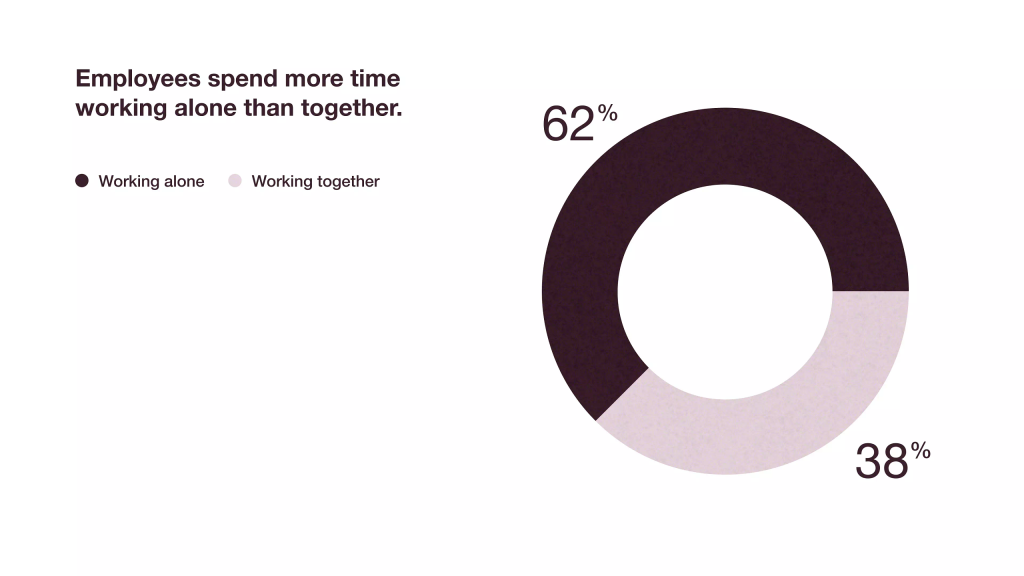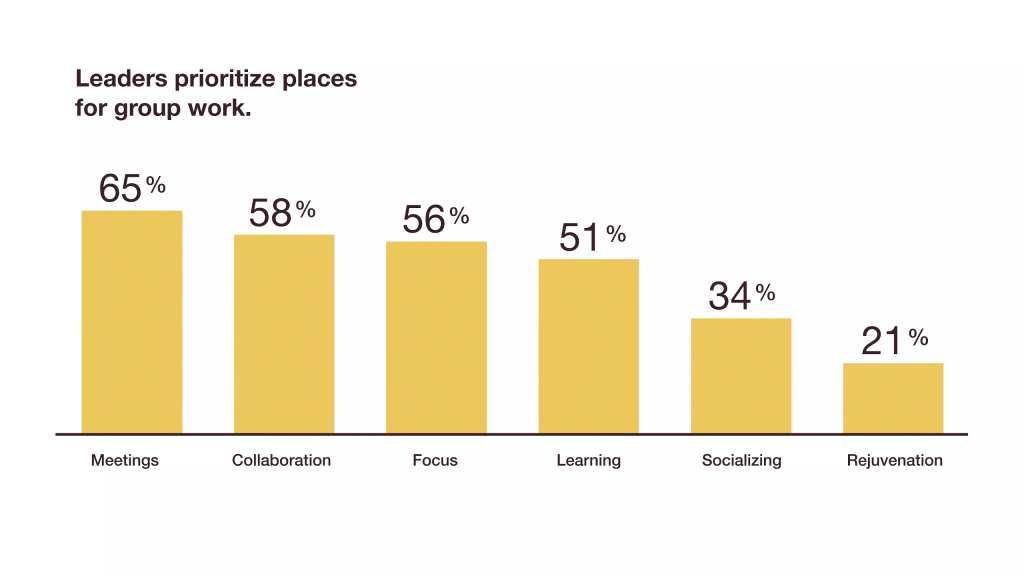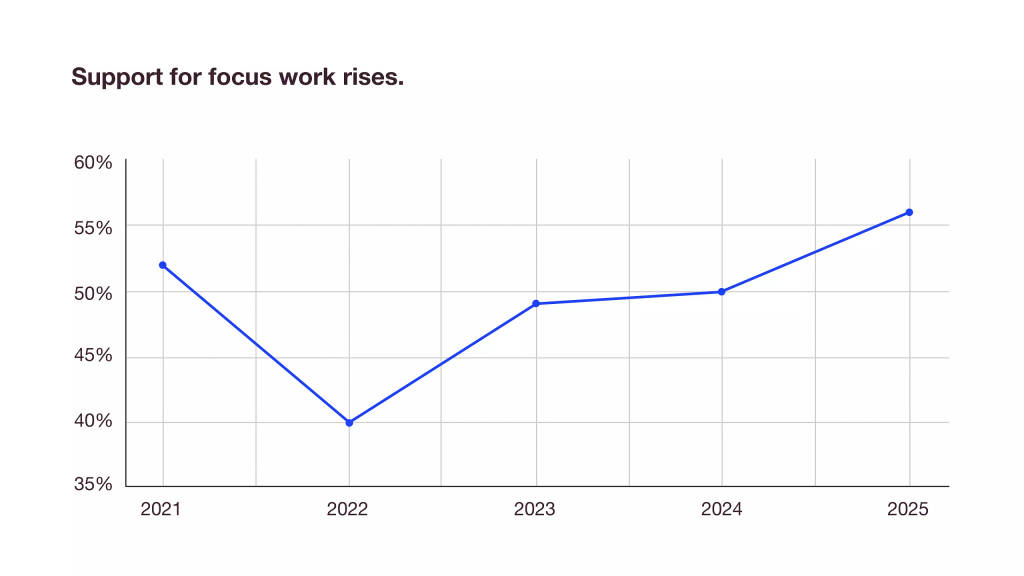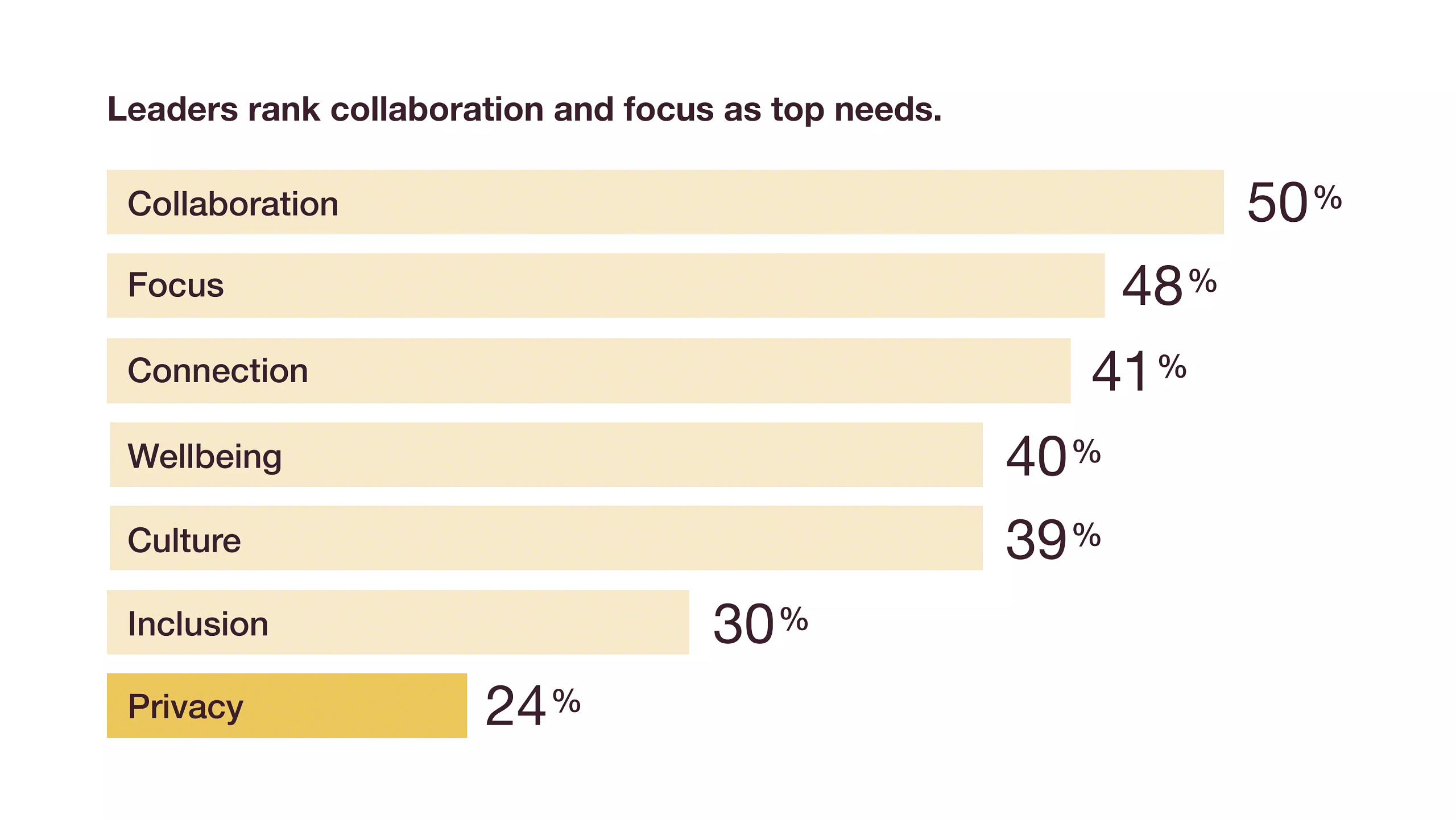New Research Identifies Missing Pieces to Fix the Workplace

STEELCASE RESEARCH
After the most tumultuous five years for office-based work in decades, patterns are stabilizing, and leaders say they’re ready — or starting — to make workplace changes. People are using spaces—or not —differently than they used to, or differently than many people thought in the initial post-pandemic return to the office. The net out: regardless of industry or business size, it’s time to move past some old ways of designing workplaces and lean into supporting the ways people work today.
New Steelcase research conducted with organization leaders in the US sheds light on what needs to happen to help people be more productive and engaged, and feel better at work, (read Five Ways Your Office Will Change by 2027). No matter how big or small a space is, it needs to work harder by supporting more ways for people to work.
A MORE FLEXIBLE OFFICE
With so much change occurring at once, the need for flexibility is a key factor driving the adoption of shared desking in organizations. A decade ago, most offices were designed around a 1:1 desk-to-employee ratio. Now, more than half of organizations have two or more people sharing a desk — a growth rate that has flattened over the last two years. As more people work in the office more often, employers are providing a mix of shared and assigned desks to support their work patterns.


Takeaway: Today, desk sharing is fairly common across organizations. In fact, more than half of companies have a shared desking model. But, how it’s implemented varies widely. Among companies that use shared desking, the ratio of people to desks can range significantly depending on strategy and other factors. 83% expect sharing of 2-to-1 or higher. Most land around a 4-to-1 ratio, though some go as high as six people per desk. Whether desks are assigned or shared, what matters most is giving people access to a variety of spaces that support different types of work — and the freedom to choose what fits best.
THE UNDERUSED CONFERENCE ROOM
Large conference rooms have been a common feature in most workplaces for many years. Are you seeing big cavernous meeting rooms with just a few people in them? It’s happening everywhere. Nearly 60% of meeting spaces are designed for 11 or more people. Yet, most meetings average 1-3 people attending in person.

Even during mid-week busy days, big conference rooms sit underused. Steelcase partner VergeSense found that even during high-attendance Tuesdays, 2-4 person spaces are still used most often, 70-81% of the time. Rooms for five or more people are only used about half the time. (VergeSense, 2025).
Takeaway: While there’s still a place for the traditional large meeting room, fewer are needed today. Many organizations are finding other, more flexible ways to host larger groups in open spaces. Consider how demountable walls could help divide up a large enclosed space into smaller, more frequently used huddle and individual rooms (see example).
FOCUS WORK SUPPORT LAGS BUT IMPROVING
Most U.S. employees spend nearly two-thirds of their time working alone, which is why they continue to report a need for better places to focus in the office. Leaders say they prioritize meeting and conference spaces ahead of those for focused work, although their support for adding more places to focus has increased over the last four years.



Takeaway: As people initially returned to the office as the pandemic eased, organizations rightfully prioritized health and safety, with a greater emphasis on individual spaces. As more people came to the office, space was reallocated to add more collaboration areas with the belief that people only came to the office for group work and would do individual work at home. Now, leaders indicate they are hearing and responding to employee needs for both focus and collaboration spaces.
PRIVACY RANKS LOW ON LEADERS’ PRIORITY LIST
Steelcase employee research has shown that privacy is employees’ #1 need. Yet, for leaders, it’s last on the list compared to other workplace improvements.

Takeaway: Leaders may view privacy as an expensive and insurmountable problem, causing them to prioritize it low on their list. The reality is that there are a range of ways to design for different types of privacy — acoustic, visual, and territorial — and they do not all have to include four walls and a door. There are accessible and flexible ways to add needed private or shielded spaces to the office. The best workplace privacy solutions offer a variety of options to support people throughout their workday (read: The Possibilities of Privacy).
The forces changing work today are impacting organizations of all sizes and industries. The workplace is a strategic asset organizations can use to design for flexibility and resilience. But today’s workplace often fails to meet the evolving needs of people working in different ways.
Getting started on making changes doesn’t have to be difficult. Steelcase’s approach to designing the workplace, Community-Based Design, can be scaled up or down to support evolving patterns of behavior. Applying Community-Based Design principles to underperforming spaces can provide people with more options and better experiences that meet their needs at work today. Leaders can address one space at a time by improving collaboration rooms, individual workspaces or adding privacy elements. To learn more about Community-Based Design, read Community at Work.













